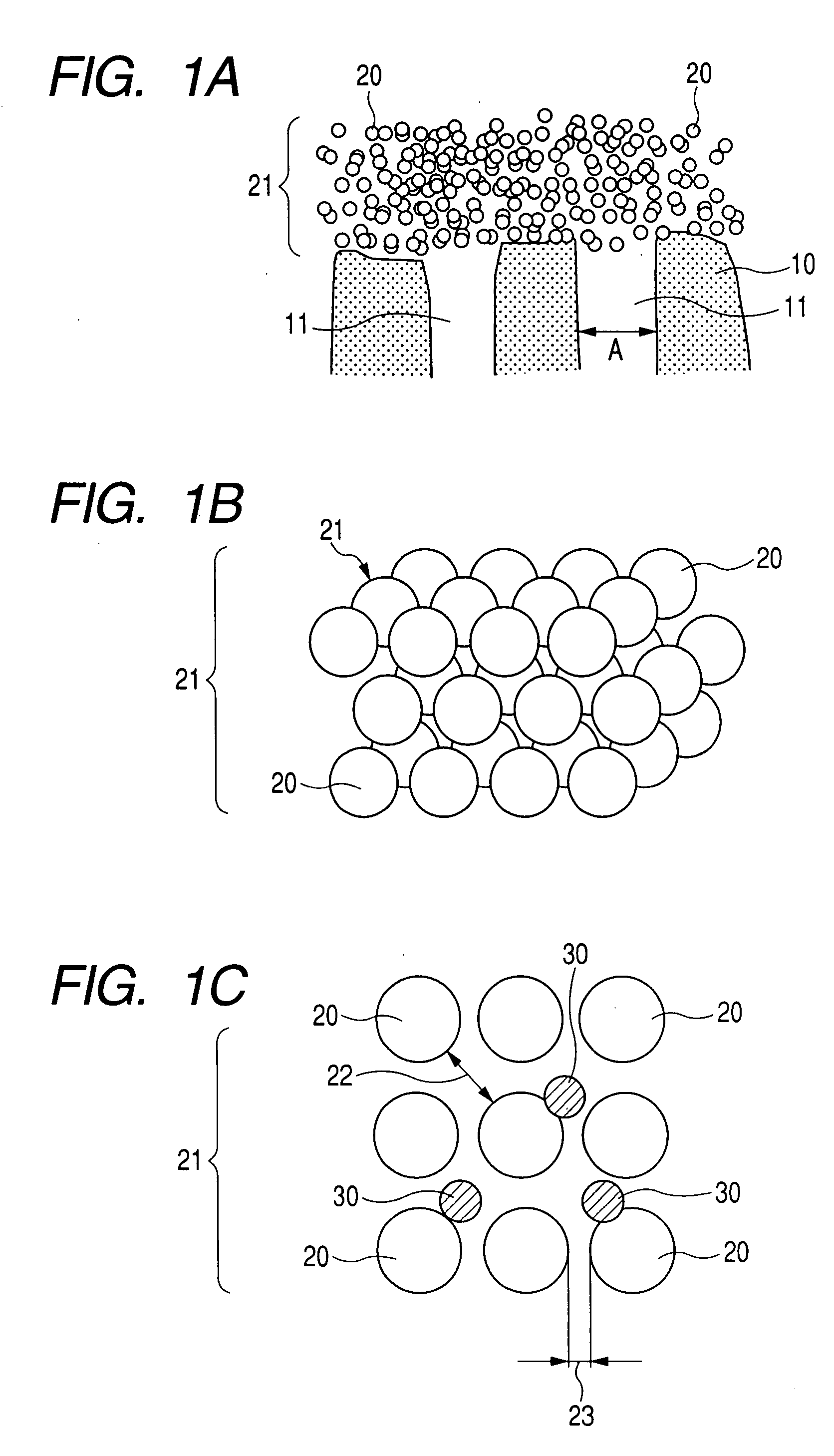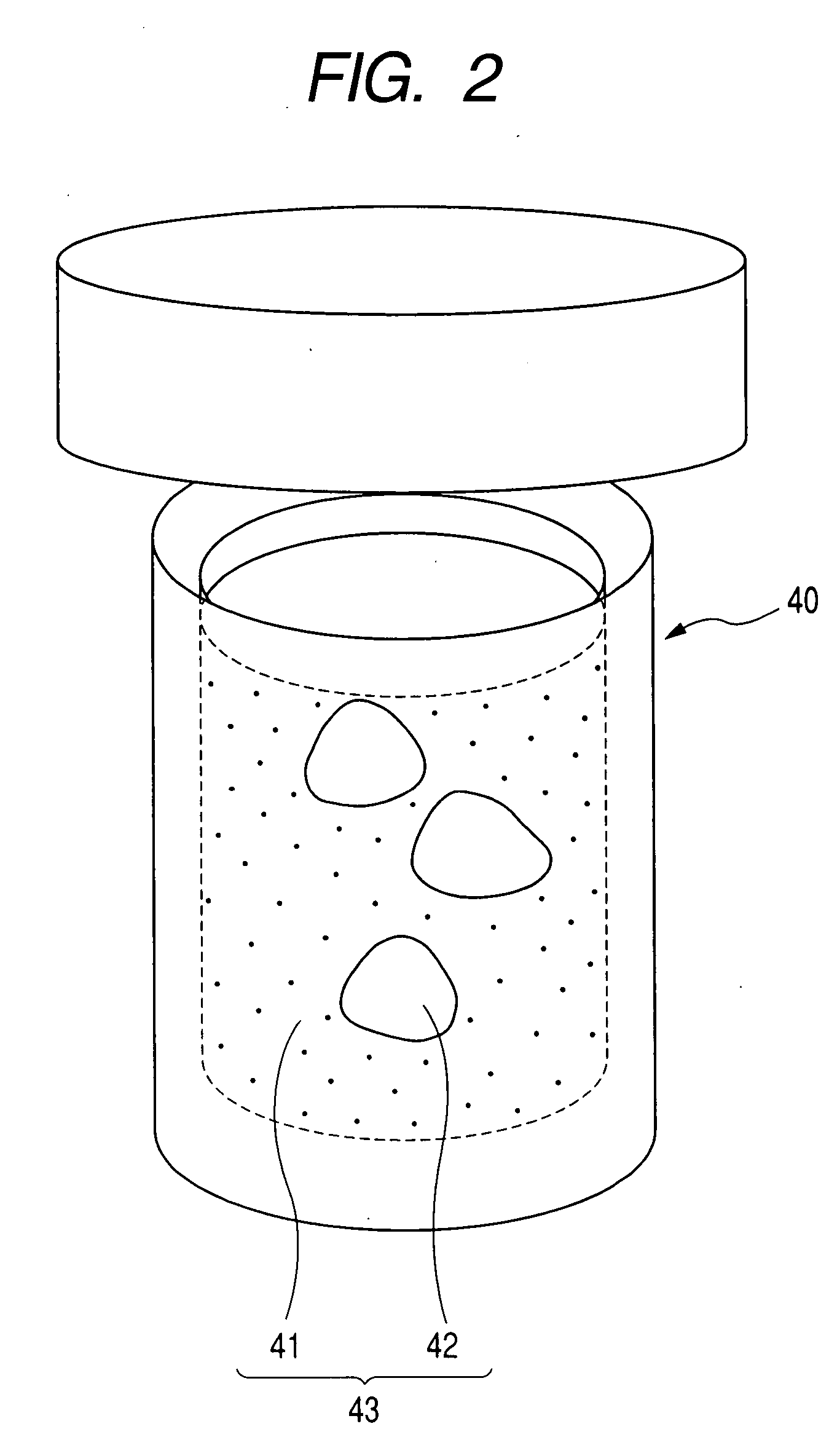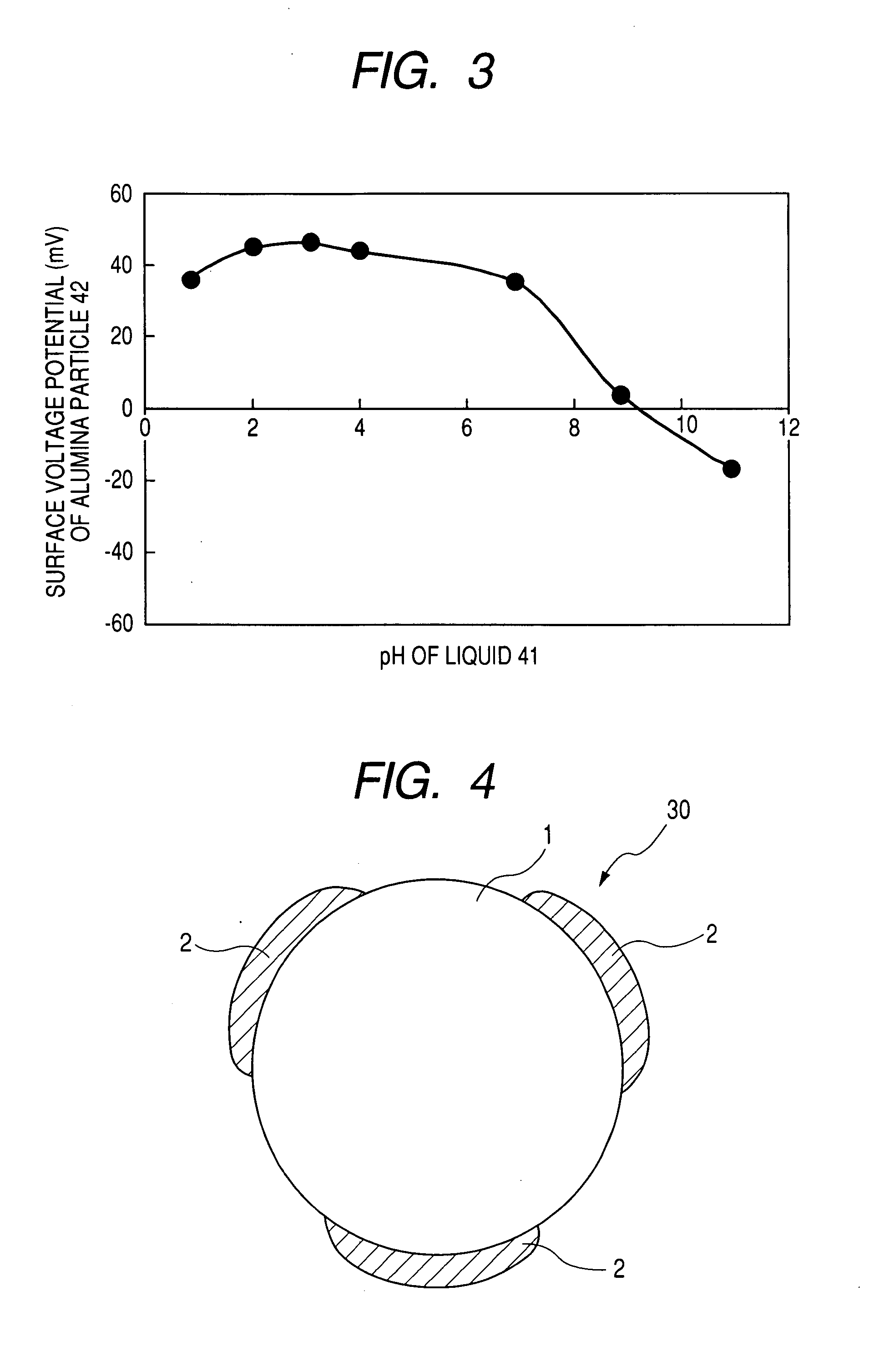Method of producing catalyst support particles and a catalyzer using the catalyst support particles
a technology of catalyst support and catalyst, which is applied in the direction of physical/chemical process catalysts, metal/metal-oxide/metal-hydroxide catalysts, and separation processes. it can solve the problems of poor heat resistance of metal oxide particles, poor thermal resistance of conventional -alumina, and difficult to obtain -alumina particles of fine particles. it can reduce the change of specific surface area, prevent the deterioration of the catalyst function, and increase the thermal resistance capability of alumina
- Summary
- Abstract
- Description
- Claims
- Application Information
AI Technical Summary
Benefits of technology
Problems solved by technology
Method used
Image
Examples
first embodiment
[0039] A description will be given of a structure of a catalyzer produced by the method according to the first embodiment of the present invention with reference to diagrams.
[0040]FIG. 1A is a schematic sectional view of the catalyzer according to the first embodiment of the present invention. FIG. 1B is an enlarged sectional view of a coated layer 21 in the catalyzer shown in FIG. 1A. FIG. 1C is an enlarged view of the coated layer 21 shown in FIG. 1B.
[0041] As shown in FIG. 1A, the catalyzer of the first embodiment has a structure in which the coated layer 21 is formed on the surface of a porous inorganic base material 10. The coated layer 21 is made mainly of alumina particles 20 and the like as metal oxide particles. As will be described later in detail, the alumina particles 20 to be used through the embodiments of the present invention are obtained by treating γ-alumina particles at a high temperature under a high pressure (namely, by performing a hydrothermal treatment) to ...
PUM
| Property | Measurement | Unit |
|---|---|---|
| temperature | aaaaa | aaaaa |
| temperature | aaaaa | aaaaa |
| particle size | aaaaa | aaaaa |
Abstract
Description
Claims
Application Information
 Login to View More
Login to View More - R&D
- Intellectual Property
- Life Sciences
- Materials
- Tech Scout
- Unparalleled Data Quality
- Higher Quality Content
- 60% Fewer Hallucinations
Browse by: Latest US Patents, China's latest patents, Technical Efficacy Thesaurus, Application Domain, Technology Topic, Popular Technical Reports.
© 2025 PatSnap. All rights reserved.Legal|Privacy policy|Modern Slavery Act Transparency Statement|Sitemap|About US| Contact US: help@patsnap.com



